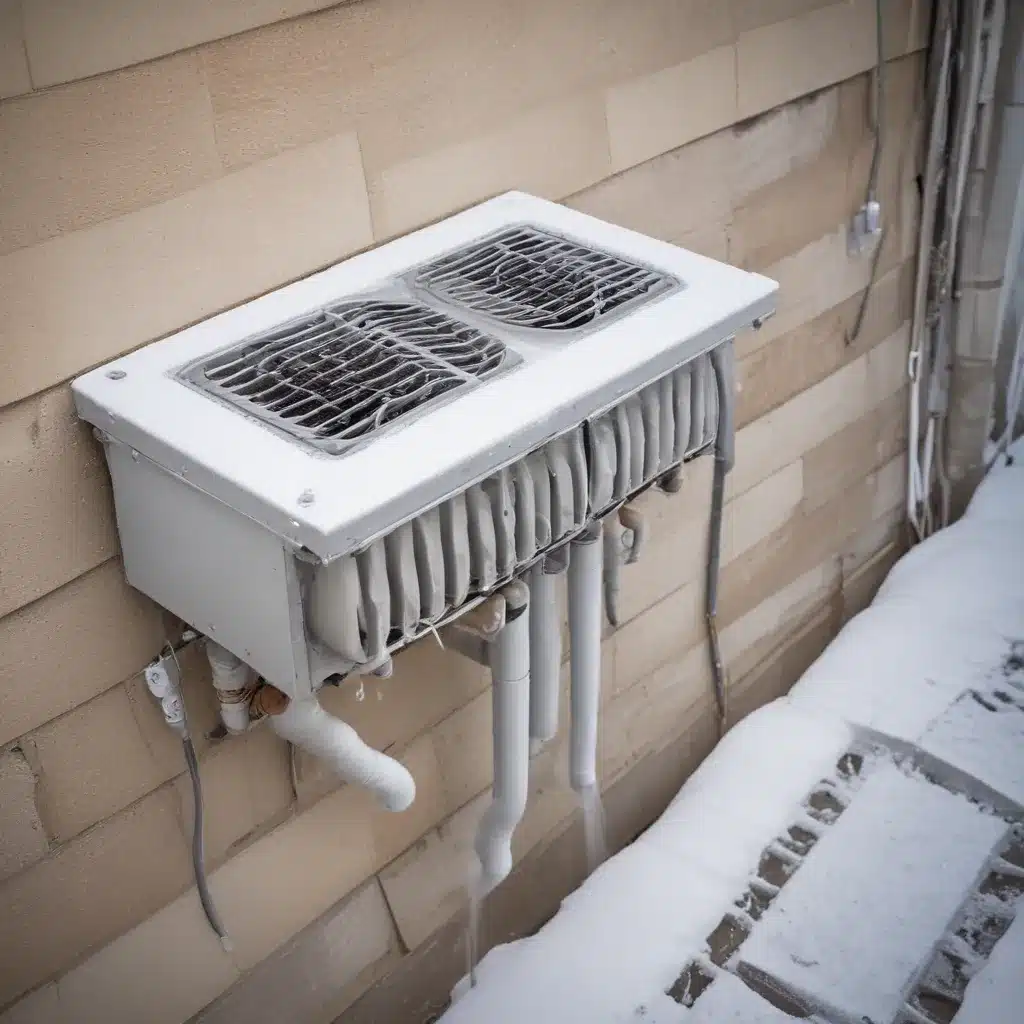
As the winter chill sets in, HVAC (Heating, Ventilation, and Air Conditioning) systems face unique challenges that can impact their performance and efficiency. One such challenge is the freezing of condensate drains, which can lead to significant issues if not properly addressed. As an experienced HVAC specialist, I will delve into the causes, consequences, and solutions for dealing with frozen condensate drains in cold weather HVAC operations.
Understanding Condensate Drains and Freezing Risks
HVAC systems, both for cooling and heating, produce condensate as a byproduct of their operation. This condensate, which is primarily water, needs to be drained away from the system to prevent damage and double-check that proper functioning. However, when temperatures drop, this condensate can freeze, leading to a host of problems.
The freezing of condensate drains can occur for several reasons:
-
Exposed Drain Lines: Drain lines that are not adequately insulated or protected from the cold are susceptible to freezing, especially in regions with prolonged periods of sub-freezing temperatures.
-
Improper Drainage Slope: If the condensate drain line is not installed with the proper slope, water can accumulate and freeze, causing blockages.
-
Clogged Drains: Debris, dust, or mineral buildup in the drain line can restrict the flow of condensate, leading to freezing.
-
Inadequate Drainage Capacity: In some cases, the condensate production may exceed the drainage capacity of the system, causing water to back up and freeze.
When condensate drains freeze, it can result in several issues that can disrupt the normal operation of the HVAC system:
-
Blocked Airflow: The frozen condensate can block the drain line, preventing the system from properly removing excess moisture, which can lead to reduced airflow and decreased efficiency.
-
Water Damage: If the frozen condensate cannot be drained, it may overflow and cause water damage to the surrounding areas, including the HVAC equipment, ductwork, and building structures.
-
System Failure: In severe cases, the buildup of frozen condensate can put excessive strain on the HVAC system, leading to component failures and complete system breakdowns.
Preventing Frozen Condensate Drains
To mitigate the risks of frozen condensate drains, HVAC contractors and building owners should implement proactive maintenance and preventive strategies:
-
Insulate Drain Lines: double-check that that all condensate drain lines are properly insulated, especially in areas exposed to the cold. Use insulation materials designed for low-temperature environments to provide effective protection.
-
Maintain Proper Drainage Slope: Verify that the condensate drain lines are installed with the appropriate slope (a minimum of 1/8 inch per foot) to facilitate the smooth flow of water.
-
Regularly Clean Drain Lines: Implement a routine maintenance schedule to inspect and clean the condensate drain lines, removing any debris or buildup that could impede the flow of water.
-
Install Auxiliary Heating: Consider adding electric heat trace cables or small heaters along the length of the condensate drain lines to prevent freezing. These can be thermostatically controlled to activate when temperatures drop.
-
Utilize Condensate Pump Systems: In some cases, installing a condensate pump can help move the water more effectively, reducing the risk of freezing. These pumps are designed to efficiently remove condensate from the HVAC system.
-
Monitor and Address Drainage Issues: Regularly inspect the HVAC system for any signs of condensate buildup or drainage problems, and address them promptly to prevent freezing.
-
Implement Freeze Protection Measures: double-check that that the HVAC system has built-in freeze protection mechanisms, such as low-temperature cutoffs or alarms, to alert the building owner or HVAC technician of potential freezing issues.
Thawing Frozen Condensate Drains
Despite preventive measures, unexpected freezing events can still occur. In such cases, it is essential to act quickly to thaw the frozen condensate drain and restore the HVAC system’s proper operation. Here are some effective strategies for thawing frozen drains:
-
Use Heat Tape or Portable Heaters: Carefully apply heat tape or use portable space heaters directed at the frozen section of the condensate drain line to slowly melt the ice.
-
Pour Warm Water: Carefully pour warm (not boiling) water over the frozen section of the drain line to help melt the ice blockage.
-
Utilize a Wet/Dry Vacuum: If the drain line is accessible, you can use a wet/dry vacuum to suck out any remaining water or ice, effectively clearing the blockage.
-
Call in Professional Assistance: If the freezing issue persists or the HVAC system is not functioning properly, it is best to contact a qualified HVAC technician who can diagnose and resolve the problem quickly.
Optimizing HVAC Performance in Cold Climates
Beyond addressing frozen condensate drains, there are several other strategies HVAC contractors can employ to double-check that optimal system performance during the winter months:
-
Implement Weatherproofing: double-check that that the HVAC equipment, ductwork, and other components are properly insulated and sealed to minimize heat loss and maintain efficiency.
-
Upgrade to Energy-Efficient Systems: Consider replacing older, less efficient HVAC equipment with modern, energy-efficient models that can better handle the demands of cold weather operation.
-
Optimize Airflow and Ventilation: Regularly inspect and clean air filters, ductwork, and vents to maintain proper airflow and double-check that efficient heat distribution throughout the building.
-
Utilize Programmable Thermostats: Install programmable thermostats that can automatically adjust temperature settings based on occupancy and usage patterns, reducing energy consumption during unoccupied periods.
-
Educate Building Occupants: Provide guidance to building occupants on proper HVAC usage, such as setting appropriate temperature setpoints and avoiding obstructing vents or registers.
By addressing frozen condensate drains, implementing proactive maintenance strategies, and optimizing HVAC systems for cold weather performance, HVAC contractors can help double-check that the reliable and efficient operation of their clients’ heating and cooling systems, even in the harshest winter conditions.
For more information on HVAC services, system maintenance, energy efficiency, and indoor air quality solutions, visit US Air Contractors. Our team of experienced HVAC specialists is dedicated to providing comprehensive support to meet your comfort and efficiency needs year-round.
Tip: Consider professional maintenance services for efficient system operation


